It’s Friday evening. You’re famished and tired after a long week, so you get takeout. You wolf down chips with a side of guacamole and can only finish half of your overstuffed burrito, so you wrap up the rest and put it in the fridge. Saturday morning, you make a smoothie before your run. You add juice, spinach and frozen fruit, but your avocados that were too hard just a couple days ago squish, and your bananas are battle-scarred and spotted.
That afternoon, it’s lunchtime for the kids. You rummage through the fridge and find that loaf of bread your friend raved about but your kids won’t eat. And last week’s bowl of chili has grown a coat of fur. You hoped to turn that gorgeous, shiny, purple eggplant you bought from the food delivery service into a dish that melts in your mouth the way it does at the Afghan restaurant down the street. But it’s sunken and liquified, and your finger punctures its skin when you try to pick it up.
It’s Sunday. You root around looking for something to eat. You peel back the foil and paper, revealing the other half of your burrito. The edge of the wrap is dry and curled and the bottom is a soggy mess. You clean out the fridge. It looks bare and you decide it’s time for a grocery run — restarting the cycle of food waste that many American households are trapped in.
Covered heaps of organic waste await processing at Mid Valley
Disposal.
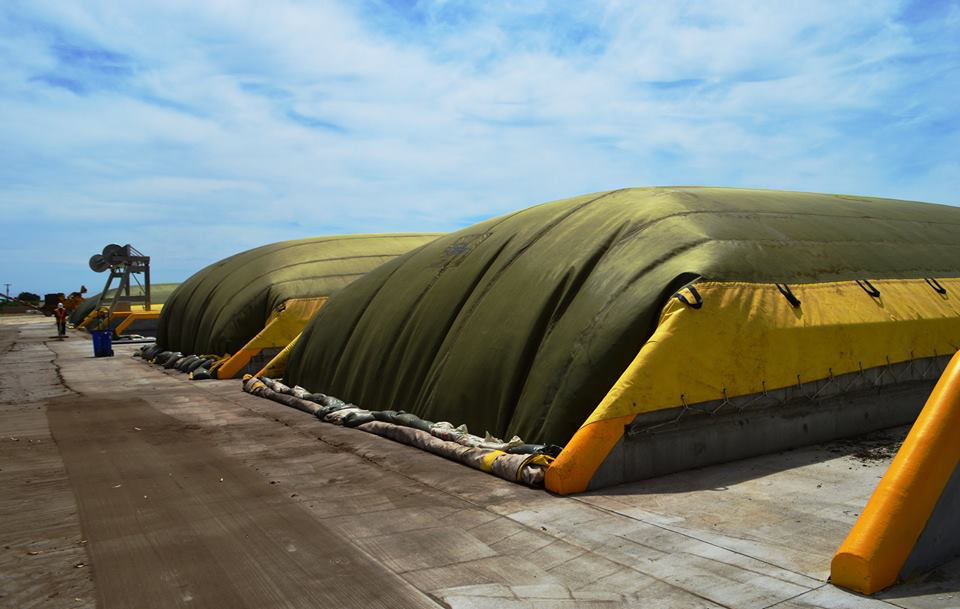
There, organic waste can’t decompose properly, so it releases methane — a short-lived greenhouse gas 84 times more potent than carbon dioxide in the first 20 years of its lifetime. Methane is a key contributor to climate change and California landfills contribute approximately one-third of the state’s total methane emissions. To reduce short-lived greenhouse gas emissions, Senate Bill 1383 was signed into law in 2016 and went into effect Jan. 1, 2022 with the goal of reducing organic waste sent to landfills by 75 percent by 2025. It mandates all Californians and businesses to recycle their food waste and requires some food businesses and other facilities to donate leftover edible food. The law aims to recover 20 percent of edible food that would otherwise be thrown away for human consumption by 2025.
“This is the single fastest and easiest thing that each and every one of us can do,” says Rachel Machi Wagoner, director of CalRecycle. “Just think about how much easier it is to throw away a banana peel than to stop driving your car.”
It’s the largest change in solid waste management since jurisdictions began curbside collection recycling programs in the 1980s. While Assembly Bill 1826 began requiring some commercial businesses such as restaurants to recycle their food waste in 2016, SB 1383 is the first program in the U.S. of this scale (40 million people) to mandate residents and all businesses — regardless of whether they are in the food service industry or how much food waste they produce — to do so as well.
The mandate, which doesn’t have an opt-out option, requires local jurisdictions to procure a certain percentage of the products created from the recycled organic waste. For example, much of the organic waste collected will be processed into fertilizer, mulch or energy. Based on a jurisdiction’s population, CalRecycle assigns an annual target of how much product created from the waste each jurisdiction needs to use.
“We are at the precipice of building a circular economy here in California,” Wagoner says. “Organic waste is … foundationally a part of how we’re going to do it and it contains all the principles. We’re taking something that otherwise would have gone as a waste. We’re turning that into a commodity. We’re doing it locally here in California and we’re putting it back to use here in California and we’re doing it to the benefit of the communities that are participating in that economy.”
Who will foot the bill?
But the mandate is complex, and it’s left up to local jurisdictions to figure out how to fund, build infrastructure and capacity, scale, educate and enforce compliance. Many are struggling with how to implement it — even though CalRecycle worked alongside jurisdictions to help shape regulations to support compliance and continues to provide technical assistance and guidance to implement the programs. While the mandate called for a Jan. 1 effective date, Wagoner says less than 50 percent of jurisdictions had a food and organic collection waste plan in place as of early January.
The pandemic, uncertainty about whether the state would provide an extension for implementation, and questions around regulations, funding and infrastructure have slowed progress. In Oct. 2021, Gov. Gavin Newsom signed Senate Bill 619 into law, which allows a path for jurisdictions that were not in compliance by Jan. 1 to implement their program without civil penalties.
In the Capital Region, jurisdictions within Sacramento County are collaborating on a regional timeline to implement food waste collection and disposal, and reduce the potential for confusion as residents move across invisible boundaries such as city and county borders in their daily lives. This was a lesson learned in 2016 when the City of Sacramento enforced the ban on single-use plastic bags while Sacramento County did not. The county aims to implement the program in summer 2022, following an intensive three-month educational campaign on what the program will look like and how to reduce contamination within the new waste collection streams.
Jurisdictions within Sacramento County are evaluating rate increases to cover the cost. Under Proposition 218, all utility services must charge what it costs to provide the service, says Erin Treadwell, integrated waste compliance manager for the recycling and solid waste division for the City of Sacramento.
“We cannot charge more than that nor can we charge less. So we can’t subsidize it from other places, nor can we charge more and then take that extra, peel it off and use it in other ways. You must charge what it costs,” she says. “Because processing food waste costs quite a bit more than taking it to the landfill, we have to build that cost into our rate that we charge and that has to go through council approval. We’re all in the mode of getting … approvals for rate adjustments so that we can afford to implement this law.”
Diverting food waste from the landfill is expensive because it has to be collected and processed, Treadwell says. “We don’t process anything ourselves. We, the city, have to contract it all out. Most jurisdictions are in the same boat. We don’t have a magic compost processor anywhere.”
Sacramento structured its contracts with facilities to reduce the distance its trucks travel and in turn its environmental footprint, and to align with each facility’s capacity. Some of the city’s waste will be processed into compost at the Yolo County Central Landfill. Loads taken to the Sacramento County North Area Recovery Station in North Highlands and Republic Services Elder Creek Transfer Station in Sacramento will be delivered and processed at various composting facilities in the region, says Margaret Kashuba, administrative analyst for Sacramento’s recycling and solid waste division.
Rate increases to pay for Sacramento’s food waste collection were unanimously approved by city council in January. Effective April 1, 2022, monthly rates will increase from $42.59 to $46.42 for a 64-gallon garbage can, as well as recycling and organics collection. On Jan. 1, 2024, that rate will increase to $54.08. Once the program begins, customers who already have yard waste collection services can use those containers to dispose of food waste. Those who don’t have yard waste collected will receive an organics container for food waste collection this summer and will see a new charge of $10.02 per month beginning July 1, 2022.
The state is providing $57 million to local jurisdictions to implement the logistics of the program — such as collection bins, education, enforcement and capacity planning. Additionally, Newsom approved $270 million in the state’s 2022-23 budget “to support a circular economy that recognizes waste as a resource, shifting the state’s focus to a more resilient and renewable economy.”
Where will the waste go?
According to CalRecycle, there are nearly 200 compost, anaerobic digestion and biomass facilities that process organic waste, but it estimates another 50-100 facilities are needed to process the additional 20 million to 25 million tons of organic waste collected under SB 1383. Wagoner says to fully accommodate all the waste and the growth of California, it’s going to take a decade to build out the infrastructure, which is expected to cost between $20 billion and $40 billion including the collection system. Much of the needed funding is expected to come from private investments in organic waste technology.
“We have a lot of private partners who are excited to come to California because … we put together a regulatory package that provides certainty and provides a market for these types of technology,” Wagoner says.
While not a new technology, the composting industry is emerging as a key market for processing organic waste. “California’s composting market cannot keep up with demand … and is critical for California’s agricultural industry,” Wagoner says. “Marrying this delivery and this creation of compost with our need to use less water and less chemicals in our soil because of our changing environment (is crucial). This is a huge moment in time where we can take this environmental catastrophe that we are really faced with and turn it into resilience.”
Co-digestion is an emerging technology making its way into the organic waste market as well. It’s attractive because it can be co-located with wastewater treatment facilities, meaning its infrastructure can be built out relatively quickly, Wagoner says. The organic waste is processed much like the solids from wastewater and can be converted into an energy source.
Advancements in anaerobic digestion are underway as well. The technology uses microbes to convert food scraps and other organic waste — called feedstock — into electricity, biogas or compost.
“There have been leaps and bounds (in) investments among California universities and businesses around how do we really maximize this technology for the greatest output,” Wagoner says.
There are two operational anaerobic digesters in the Capital Region: one at the Yolo County Central Landfill that can process 52,000 tons of organic waste a year, and the UC Davis Renewable Energy Anaerobic Digester, which can process more than 18,000 tons a year.
City of Sacramento contracts out the processing of its compost.
Here, CalRecycle moves and manages compost at one of its
facilities.
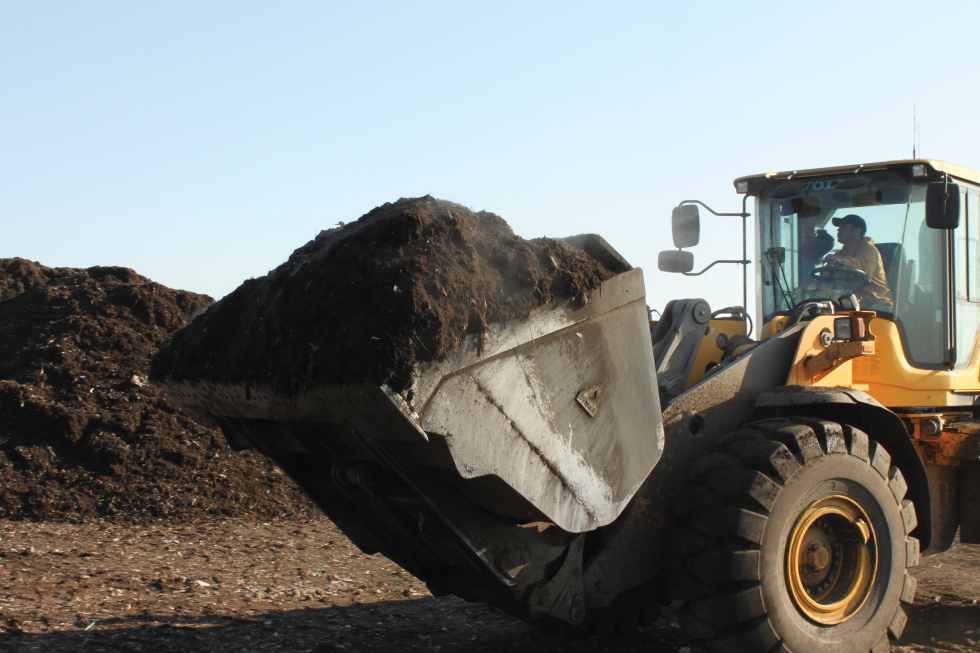
UC Davis’ biodigester used to produce energy for the university’s grid, but the equipment that converted the biogas into a useful form stopped functioning, was removed and has not been replaced due to prohibitive costs. For the time being, the biogas is burned off. Additionally, the biodigester must shut down when there is no outlet for the 6,000 gallons of ammonia-rich liquid waste it produces daily. The university is looking toward solutions, such as using the biogas to fuel its fleet, says Joseph Yonkoski, associate engineer supervisor of utilities data and engineering for UC Davis, but the cost of infrastructure still remains a barrier. Yonkoski is also leading a project to convert the liquid waste into fertilizer and sell it to support the biodigester’s annual operating costs of $650,000-$700,000.
Today, the digester functions at roughly 40 percent capacity, processing around 20 tons of food and other organic waste a day. The bulk of its feedstock comes from the university’s dining commons, El Dorado Disposal and Raley’s, a grocery store chain with 125 stores in the Sacramento region. In 2020, Raley’s delivered more than 17.5 million pounds of food waste to UC Davis’ biodigester that couldn’t be repurposed, donated through its food rescue program or sent to farms for animal feed.
Educating the public
Jesa David, media and communications specialist for the City of Sacramento’s recycling and solid waste division, is working on developing a broad outreach campaign leveraging TV, radio, billboards, social media posts and mailings. “It is such a big educational stepping stone for a lot of people and even a cultural shift. Just changing habits at home can be really difficult,” she says.
That includes targeted campaigns to educate the many non-native English speakers in Sacramento. While working on outreach efforts to keep standard recycling from getting contaminated, the city worked with immigrant communities and several local embedded non-governmental organizations. Through that experience, it learned what makes for the most effective communication for communities, and it’ll likely call upon those relationships again, David says.
What’s the greatest source of concern for contamination of the organic waste stream? Plastic. “It can be complex, like containers that look like just paper or a coffee cup that looks just like paper. It might actually have a thin layer of plastic around it,” David says. “It’s hard to get people to distinguish that and to convey that messaging.”
The process of anaerobic digestion uses microbes to convert food
scraps and other organic waste — called feedstock — into
electricity, biogas or compost. Here, construction of
infrastructure equipped with the technology is underway.

To simplify education and minimize contamination, Kashuba says waste such as coffee filters, napkins, paper towels, food-soiled paper containers (think pizza boxes) and food scraps, including bones, dairy and meat, will be what is primarily accepted.
The first couple of years will be about education and trying to get people in this new mindset, Treadwell says. “But it is also incredibly prescriptive as a law for enforcement.” After 2024, jurisdictions are required to issue notices of violations and fines, and perform lid flips and check for contamination. “That’s built into the state law. We may not have necessarily laid it out like that, but that’s what the state’s requiring us to do.”
Wagoner says if Sacramento County is finding that the behavioral change isn’t happening and they’ve implemented the regulations and done all of the inspections, they may have to figure out some sort of enforcement program.
As the program gets underway, the message to residential customers is simple: “Don’t panic,” Treadwell says. For most folks, “You’re moving your food waste that’s already going into the garbage into the green (waste). It’s just shifting from one container to the next.”
“We hear a lot of, ‘But I’m not a restaurant. But I don’t sell food.’ That’s no longer the benchmark. It’s: Are you a human or are you eating? … It’s not quite that basic, but it’s no longer ‘I’m not a restaurant.’ That doesn’t matter if you generate waste. Food waste is now part of our life.”
Erin Treadwell, Integrated waste compliance manager, Recycling and Solid Waste Division, City of Sacramento
For commercial customers, it’s a bit more complex. “We hear a lot of, ‘But I’m not a restaurant. But I don’t sell food.’ That’s no longer the benchmark. It’s: Are you a human or are you eating? … It’s not quite that basic but it’s no longer ‘I’m not a restaurant.’ That doesn’t matter if you generate waste. Food waste is now part of our life,” Treadwell says. “Once it comes into the residential sector, it’ll be everywhere, just like bottle recycling is everywhere. … No matter where you are … food waste recycling is just part of the deal, so I think it’ll eventually be an easier process when it’s just everywhere.”
–
Stay up to date on business in the Capital Region: Subscribe to the Comstock’s newsletter today.
Recommended For You
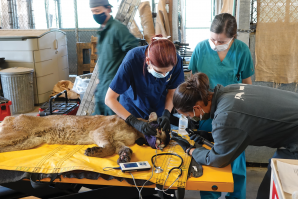
Saving Our Wildlife
When raging wildfires engulf our forests, what happens to the animals?
Capital Region researchers, veterinarians and advocates are
finding innovative ways to rehabilitate wildlife burned by
California’s raging wildfires.
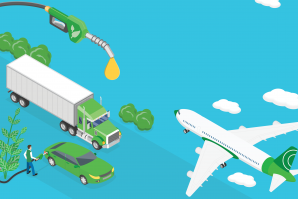
Out of the Woods
Could biomass technology help reduce megafires and build a wood-products market in California?
The process of turning wood waste into fuel not only
represents a breakthrough in the biofuels industry, but also
helps to create more resilient forests that can better
withstand wildfire.

Startup of the Month: Yolo Robotics
Davis-based company aims to recycle space debris
Tech company Yolo Robotics aims to melt and reshape space debris into useful products while remaining in orbit.
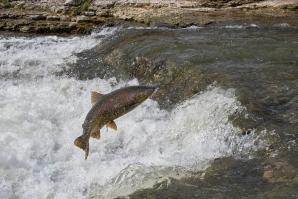
How Drought Affects the American River’s Salmon
Salmon will struggle this year. It’s up to us to help them.

Harnessing Psychedelics for Healing
A UC Davis chemist is developing drugs with all the therapeutic effects of psychedelic drugs — without the hallucinogenic trip.



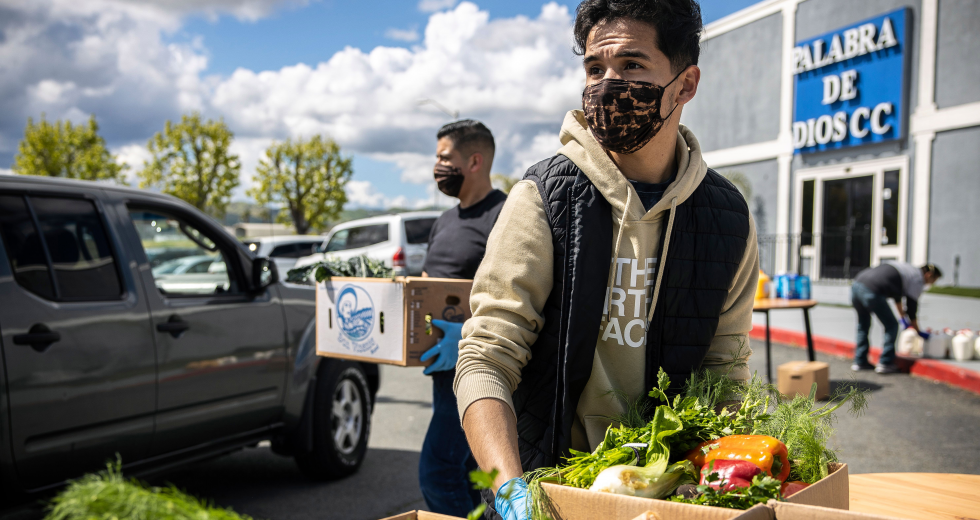
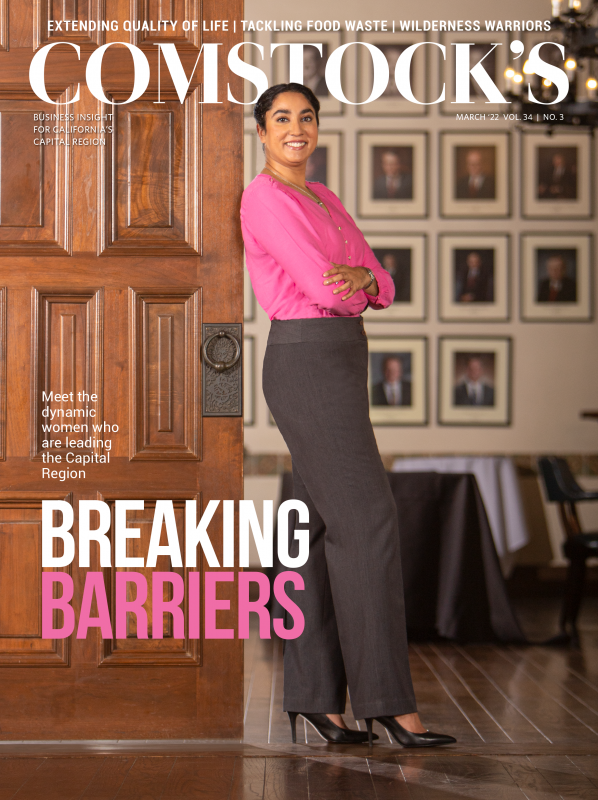
Comments
The Sacramento rate increases do not reflect the increases to the green waste bin collection, which is where most of the immediate costs are being borne. Please include the total rate increases when describing this new addition. They will start out at about a 30% increase now, and will likely escalate over time. The increased costs message of this needs to be better portrayed statewide. It's a very expensive endeavor.